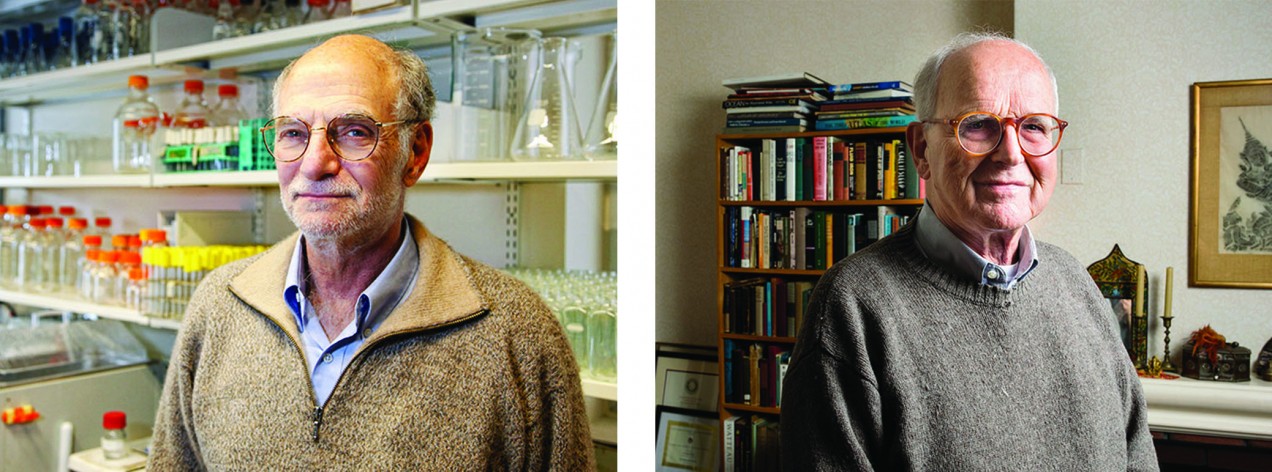

Two MIT Alumni Earn Nobels
Circadian rhythm research, first gravitational wave detection lauded.

In October Michael Rosbash, PhD ’71, and Rainer Weiss ’55, PhD ’62, both got early-morning calls from Stockholm, making them the 35th and 36th MIT alumni to become Nobel laureates.
Rosbash, a professor of biology at Brandeis University, shares the prize in physiology or medicine with Jeffrey C. Hall of the University of Maine and Michael W. Young of Rockefeller University for “their discoveries of molecular mechanisms controlling the circadian rhythm.”
Circadian rhythms help living organisms adapt their biological activities—including sleep, metabolism, and body temperature—to the normal 24-hour cycle of light and darkness. In 1984, Rosbash, Hall, and Young isolated a gene that regulates these daily rhythms in fruit flies by encoding a protein that accumulates during the night and is degraded during the day. Further work revealed that this protein inhibits the gene that encodes it, creating a negative feedback loop that is key to generating continuous oscillations. Since then, they have discovered several other genes necessary for maintaining circadian cycles, and similar processes have been found in many other organisms, including humans.
Weiss, a professor emeritus of physics at MIT, won half the Nobel Prize in physics, with the other half shared by Kip S. Thorne, professor emeritus of theoretical physics at Caltech, and Barry C. Barish, professor emeritus of physics at Caltech, “for decisive contributions to the LIGO detector and the observation of gravitational waves.”
Weiss first conceived of the Laser Interferometer Gravitational-Wave Observatory, or LIGO, some 50 years ago while teaching an introductory course in general relativity at MIT. He then played a critical role in shaping and championing the idea as it developed from a desktop prototype to its final, observatory-scale form. (In the midst of his LIGO work, he also investigated and became a leading researcher in cosmic microwave background radiation, the thermal radiation thought to be a diffuse afterglow from the Big Bang.)
In September 2015, LIGO made the first direct detection of a gravitational wave by an instrument on Earth. The detection of that wave, which scientists determined was the product of a violent collision between two massive black holes 1.3 billion years ago, confirmed Albert Einstein’s theory of general relativity. Almost exactly 100 years earlier, Einstein had predicted the existence of gravitational waves but assumed that they would be virtually impossible to detect from Earth. LIGO has since detected four other gravitational-wave signals; three were generated by pairs of spiraling, colliding black holes and the fourth by colliding neutron stars.
“The creativity and rigor of the LIGO experiment constitute a scientific triumph,” says MIT president L. Rafael Reif. “We are profoundly inspired by the decades of ingenuity, optimism, and perseverance that made it possible.”